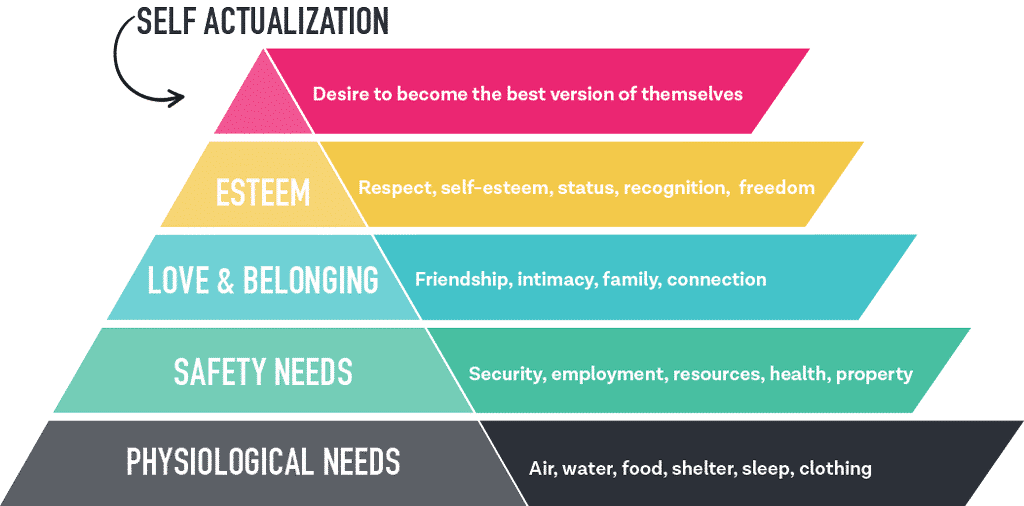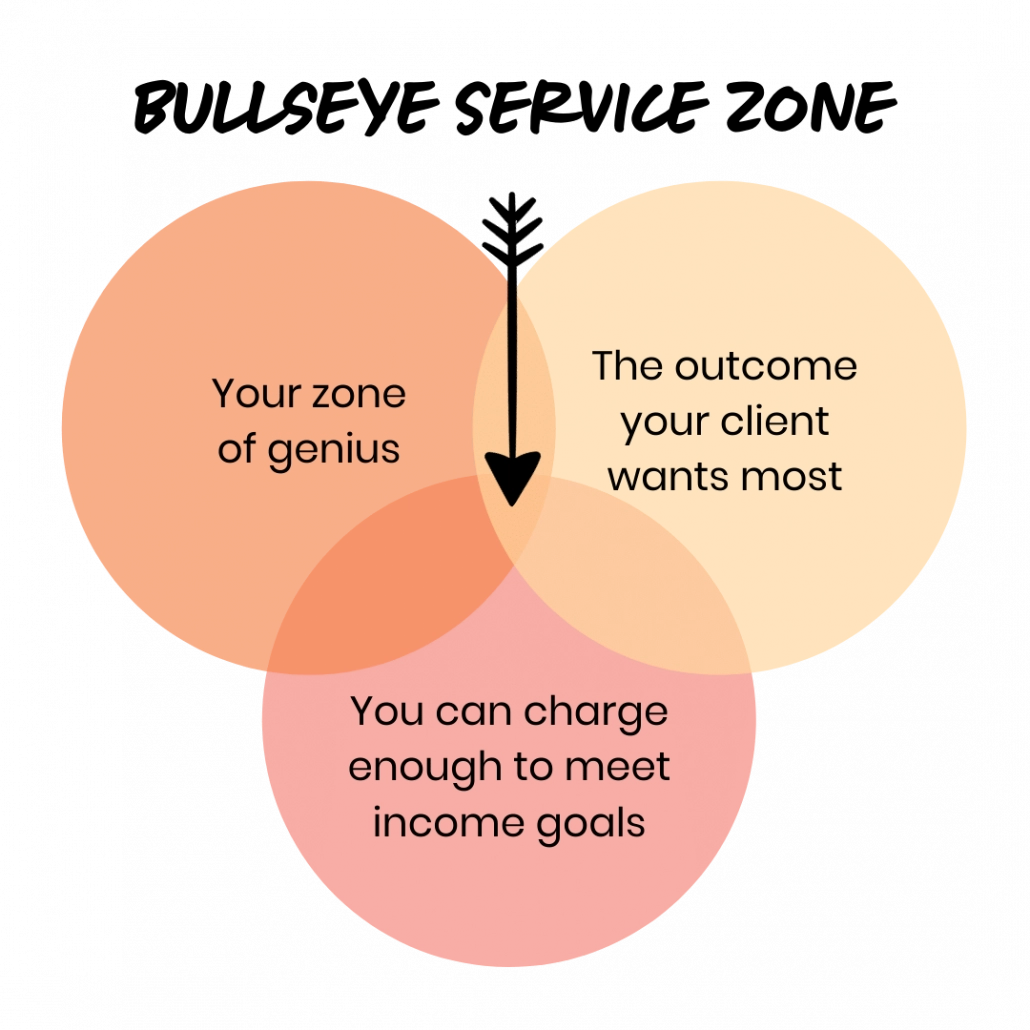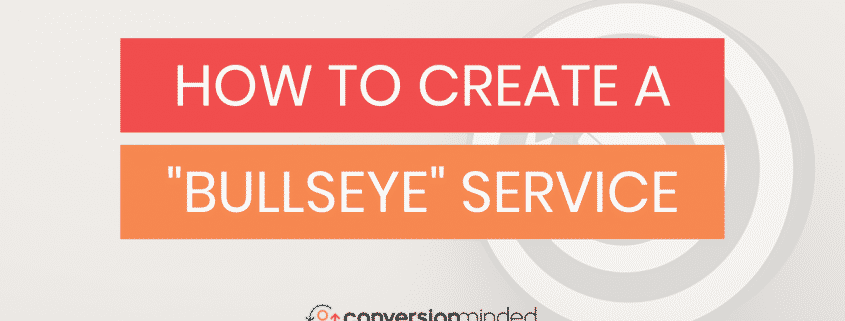Create a Bullseye Service by Identifying Hidden Client Needs
If I were to ask you, “What do your customers need?” could you answer quickly and clearly? Identifying customer needs is crucial if you want to create offers they’ll gobble up–because if you’re not selling something your customers need, good luck getting them to buy it.
This is where a lot of business advice goes wrong: it’s not enough to figure out what you love doing and what you’re great at and then telling people you sell it.
Having a dream of finding your true passion and then hoping and praying there’s a market for it is not the same thing as having a business strategy that will reward you both personally and financially.
Yes, you must figure out your unique strengths in the market and play to those strengths, but you must also create offers that customers need.
Where it gets tricky: the way you’re thinking about it is most likely not the way they’re thinking about it.
If your marketing messages are not designed to join the conversation that’s already going on in their minds, they won’t listen.
You’re intimate with the things you know will benefit your clients the most, but if they don’t already know they need it, they won’t recognize your solutions as something that’s for them.
So how do you figure out what your clients need? Let’s start with the basics:
Getting To The Bottom Of What Your Clients Need
What every client needs and wants
When I was in college I studied communications, and in just about every class, we were presented with Maslow’s Hierarchy of Needs pyramid. I memorized it, but it took me a long time to figure out why it’s relevant in my work.
If you’ve never seen it, or you need a refresher, it goes like this:

What this theory aims to teach us is that human beings all have the same needs, wants, and desires. It starts with basic needs―like, if you don’t have a roof over your head and you’re starving, you need to satisfy those needs before you can start worrying about finding true love or winning awards at work.
At the top of the pyramid are the things we should help our clients get. People want to be seen, understood, valued, respected, and to find a way to become the best version of themselves.
It doesn’t matter if you’re a life coach, a designer, a copywriter, a blogger, or a virtual assistant … what they buy from you is part of their master plan to get what they need, and those needs are basic to all humans.
Understand what that means for your clients and help them get there.
Ask Better Questions to Determine Customer Needs
It all starts with asking better questions than “What do you want?” and “When do you need it?” These are questions an order-taker asks, not a go-to expert.
Instead, ask probing questions that will help you understand where they’re coming from. They all have obstacles standing in their way of climbing up Maslow’s pyramid, what are those things?
- “What change (in life/business) do you hope to see?”
- “Looking back a year from now, how will you know our work together was successful?”
- “What is the future you want, and what’s standing in your way of getting there?”
- Then listen, really listen.
Over time, as you come to understand your clients better, you’ll start to recognize patterns: common fears and common expectations. By listening and learning from your client, you can improve your process and the outcome you promise them in your marketing messages.
Always Be Looking for Clues to Reveal Your Client’s Hidden Needs & Desired Outcomes
Clients will tell you what they really (really, really) need, but usually not directly. So always be on the lookout for the language your target customers use when describing their problems.
I recommend keeping a document where you can store questions, turns of phrases, and descriptions of their frustrations.
Here are some of my favorite ways to find customer insights into their problems:
- Join Facebook Groups that include members of your target market and pay close attention to their questions, complaints, and frustrations
- When you’re on an initial sales call or consultation, record the session (I recommend Zoom) and play it back so you can really listen
- Initial emails with new clients will provide you with a treasure trove of words and phrases that describe how they’re thinking about their problems
- Look at online forums, blogs in your niche, comments on your competitors’ social media accounts to see how your target clients are describing things
Create a Bullseye Offer That Meets Your Clients’ Deeper Needs
Once you uncover how your clients are thinking about their problems, you can create offers that will help achieve the outcome, result, or transformation they desire.
A bullseye offer, or a signature offer, is one that plays to your strengths, offers clients something they already know they need, and is something they’re willing to pay enough money for that you can meet your income goals.

Solve root problems
Customers are very good at describing external problems, but a stronger brand message is one that speaks to deeper internal problems.
Say you’re a health coach, clients may come to you and say something like “I need to lose weight and get in shape” but when you uncover the deeper reasons why, you discover they lack confidence in social situations and feel left out when their friends participate in athletic activities.
In this scenario, which marketing claim aims for the top of Maslow’s chart?
“I can help you lose weight and get fit” or “Show up to your life with more confidence, strength, and energy.”
I don’t know about you, but the idea of losing weight and getting in shape sounds hard, but I’ll raise my hand to have more confidence, strength, and energy all day long. Make sense?
Sell The Transformation
When you can do that, the people interested in the transformation you can help them get will come to you. People will be loyal to you because you helped them get the outcome they’re after―you’re not interchangeable with every other service provider offering a solution to the surface-level problem.
Move beyond being an order taker by asking better questions, discovering what your clients really need, and then sell them the outcome they want.
Recommended next step: The Brand Story Blueprint will help you get crystal clear about your customers’ needs and the story they need to hear from you. Investing in mastering your message is the most important thing you can do to build your brand as a go-to expert that meets the needs of its customers.






Leave a Reply
Want to join the discussion?Feel free to contribute!